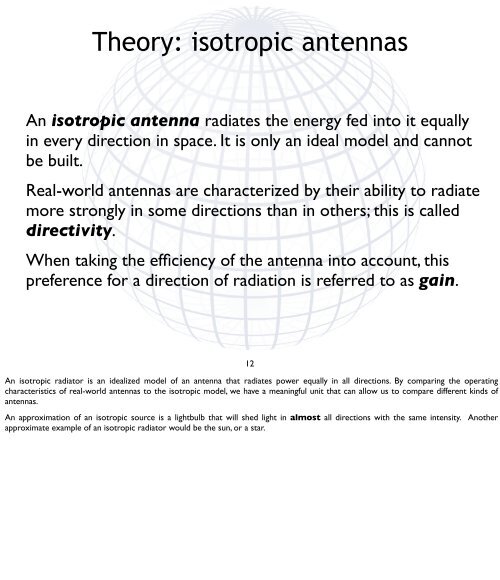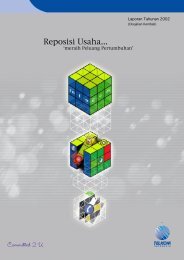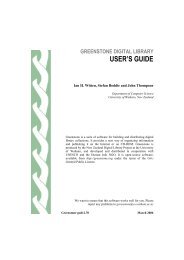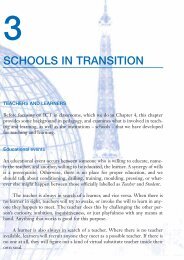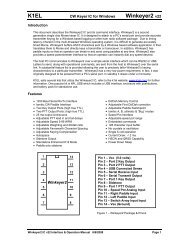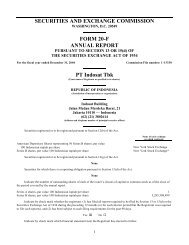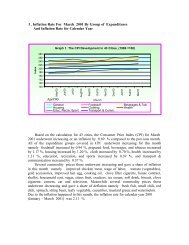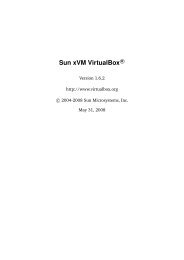Antennas and Transmission Lines
Antennas and Transmission Lines
Antennas and Transmission Lines
Create successful ePaper yourself
Turn your PDF publications into a flip-book with our unique Google optimized e-Paper software.
Theory: isotropic antennas<br />
An isotropic antenna radiates the energy fed into it equally<br />
in every direction in space. It is only an ideal model <strong>and</strong> cannot<br />
be built.<br />
Real-world antennas are characterized by their ability to radiate<br />
more strongly in some directions than in others; this is called<br />
directivity.<br />
When taking the efficiency of the antenna into account, this<br />
preference for a direction of radiation is referred to as gain.<br />
12<br />
An isotropic radiator is an idealized model of an antenna that radiates power equally in all directions. By comparing the operating<br />
characteristics of real-world antennas to the isotropic model, we have a meaningful unit that can allow us to compare different kinds of<br />
antennas.<br />
An approximation of an isotropic source is a lightbulb that will shed light in almost all directions with the same intensity. Another<br />
approximate example of an isotropic radiator would be the sun, or a star.


